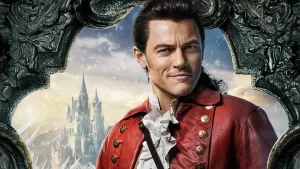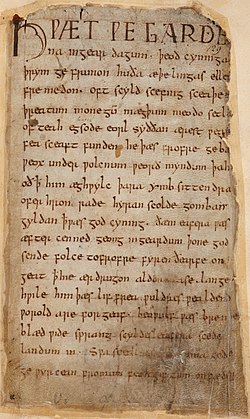Note: This article is a rework of a paper I wrote which examined the question of hero or villain as it portrays to typically masculine traits.
We all love a good hero story, and tales of bravery and strength have captivated audiences for centuries. But what happens when those same traits are twisted and used for selfish gain? Today, we’re diving into the fascinating similarities between two iconic characters: Beowulf, the legendary hero from the Old English epic poem, and Gaston, the villain from Disney’s “Beauty and the Beast.”
The allure of the hero’s journey, filled with tales of valor and might, has resonated through the ages, captivating audiences across generations. These narratives often serve as moral compasses, guiding us through the complexities of right and wrong. However, the line between heroism and villainy can blur when these same virtues are perverted and wielded to serve personal agendas. Today, we embark on a captivating exploration of the intriguing parallels between two disparate figures: Beowulf, the illustrious hero immortalized in the Old English epic poem, and Gaston, the antagonist from Disney’s classic, “Beauty and the Beast.”
At first glance, these characters occupy opposite ends of the moral spectrum. Beowulf, a paragon of courage and strength, confronts monstrous adversaries to protect his people. Gaston, consumed by vanity and entitlement, seeks to possess Belle, the film’s heroine, regardless of her wishes. Yet, beneath the surface, a closer examination reveals striking similarities in their personalities and motivations. Both men are driven by an insatiable desire for glory and recognition, and both possess an unwavering belief in their own superiority.
Delving deeper, we uncover a shared vulnerability: a fragile ego that demands constant validation. A need to prove his worth and cement his legacy fuels Beowulf’s heroic deeds , in part,. Gaston’s relentless pursuit of Belle stems from a similar insecurity, a fear of rejection that drives him to extreme measures. Both characters also exhibit a disregard for those they deem inferior, viewing them as mere obstacles to their own ambitions.
Beowulf and Gaston represent two sides of the same coin. They embody the potential for both good and evil that reside within us all. By examining their similarities and differences, we gain a deeper understanding of the complexities of human nature and the fine line that separates heroism from villainy.
Strength, Ego, and Violence: The Male Archetype

Both Beowulf and Gaston are portrayed as archetypal masculine figures, embodying traits often associated with traditional masculinity. These traits include physical prowess, an inflated sense of self, and a propensity for violence. Beowulf, the protagonist of the epic poem, frequently boasts about his lineage and his impressive feats of strength. He uses his verbal prowess to assert his dominance and intimidate others. Similarly, Gaston, the antagonist of Disney’s “Beauty and the Beast,” displays his arrogance through his self-aggrandizing song and his dismissive treatment of those he considers inferior.
Both characters exhibit a tendency to taunt and belittle those who dare to challenge them. This behavior stems from their inflated egos and their belief in their own superiority. When faced with a perceived threat, both Beowulf and Gaston eagerly seek confrontation, driven by a desire to prove their strength and maintain their dominant status. They view violence as a means to an end, a way to assert their power and control over their environment.
While both characters embody similar masculine traits, it is important to note that they exist in different narrative contexts. Beowulf presents as a heroic figure, despite his flaws, while Gaston clearly portrays as a villain. This distinction highlights the complexities of masculinity and how these traits can be interpreted and evaluated.
Hero or Villain: A Matter of Perception

The stark contrast between the societal perception of Beowulf and Gaston, one hailed as a hero and the other vilified as a villain, is deeply rooted in the presentation and interpretation of their actions. Beowulf’s boasting, in his world, is not seen as mere arrogance but as a testament to his prowess and a foreshadowing of his victories. His battles against monstrous creatures like Grendel are framed as courageous acts of valor, undertaken to protect the Danes from harm. This narrative paints him as a selfless savior, a warrior who risks his life for the greater good.
Gaston, however, is driven by an inflated sense of self-worth and an insatiable desire for control. His aggression, unlike Beowulf’s, is not channeled towards external threats but directed towards those he views as beneath him. This behavior is interpreted as bullying and intimidation, revealing a darker side to his character. His pursuit of Belle is far from chivalrous; it reads as manipulative and self-serving, driven by his desire to possess her rather than genuine affection.
The difference in their motivations is also crucial. A sense of duty and a desire to protect others primarily motivate Beowulf’s actions. Gaston, in contrast, is driven by personal gain and a need to validate his own ego. The way their stories are told reflects this distinction. Beowulf’s tale is one of heroism and self-sacrifice, while Gaston’s narrative is a cautionary tale about the dangers of narcissism and unchecked aggression.
The societal norms and values of their respective worlds play a role in shaping their reputations. In Beowulf’s world, strength and martial prowess are highly valued, and boasting is a way to assert dominance and intimidate enemies. Gaston exists in a world where outward displays of aggression and a disregard for others’ feelings are increasingly frowned upon. His actions, therefore, are judged more harshly.
The difference between Beowulf and Gaston lies not only in their actions, but also in the way those actions are interpreted through the lens of their respective societies. Beowulf’s story is a celebration of heroic ideals, while Gaston’s serves as a stark reminder of the destructive nature of narcissism and entitlement.
The Changing Face of Masculinity
The stark contrast between Beowulf and Gaston serves as a reflection of the changing societal views on masculinity and violence. In the era of Beowulf, a time steeped in the harsh realities of survival and tribal warfare, aggression and violence were not only accepted, but often lauded as heroic virtues. They were essential for protection, for upholding honor, and for securing one’s place in the social hierarchy. The warrior, the embodiment of physical prowess and martial skill, was the epitome of masculinity.
In stark contrast, the character of Gaston, existing in a more modern and civilized setting, reveals a shift in these societal perceptions. While Gaston still embodies physical strength and charisma, his aggression is no longer portrayed as heroic. Instead, it is depicted as toxic and detrimental. His violence is not motivated by noble intentions, but by a sense of entitlement and a fragile ego. His actions, far from being celebrated, are destructive and ultimately lead to his downfall.
This contrast between Beowulf and Gaston underscores the significant changes in how society views masculinity and violence. The traits that were once celebrated as heroic are now recognized as harmful and unacceptable. The evolution of these views reflects a growing understanding of the complexities of human behavior and the importance of empathy and emotional intelligence. It signifies a move towards a more nuanced and inclusive definition of masculinity, one that values strength and courage but also recognizes the importance of compassion and respect.
Hero or Villain, Final Thoughts
The juxtaposition of Beowulf and Gaston, characters seemingly disparate in their moral alignment, serves as a stark reminder that the demarcation between hero and villain is not always clear-cut. The same attributes that are lauded and celebrated in one context may be vilified and condemned in another. This ambiguity underscores the notion that heroism is not an absolute, but a construct that is shaped and molded by societal norms, cultural values, and historical contexts.
As society progresses and develops, so too does our understanding of what heroism is. While strength and bravery remain valuable and admirable qualities, they are no longer sufficient in and of themselves. Empathy, compassion, and respect for others must temper and balance these traditionally masculine traits. The modern hero is not simply a warrior or a conqueror, but a well-rounded individual who embodies both strength and sensitivity, courage and compassion.
The comparison between Beowulf and Gaston highlights the importance of perspective. From the perspective of his own culture and community, Beowulf is undoubtedly a hero. He embodies the values and ideals of his society, and his actions are motivated by a desire to protect his people. However, from a modern perspective, some of Beowulf’s actions may be seen as problematic. His violence, his arrogance, and his disregard for the lives of his enemies may be viewed as evidence of a toxic masculinity that is at odds with contemporary values.
In contrast, Gaston is clearly a villain from a modern perspective. He is arrogant, misogynistic, and violent. He represents a patriarchal worldview that is harmful and oppressive. However, it is important to remember that Gaston’s character is also a product of his own culture and time. In a society that values male dominance and female subservience, Gaston’s behavior may be seen as acceptable, or even admirable.
The comparison between Beowulf and Gaston, therefore, challenges us to question our own assumptions about heroism and villainy. It encourages us to recognize that these concepts are not fixed or absolute, but fluid and contingent. As our society continues to develop, our understanding of what it means to be a hero will continue to change. The hero of tomorrow may differ greatly from the hero of today, but they will undoubtedly embody the values and ideals that are most important to our society.
To read more of my posts, use the navigation buttons or click here.
Sources
Beowulf.Trans. JNO: Lesslie Hall PhD (J.H.U.). Boston: DC Heath & Company, 2005. Print.
Chbosky, Stephen and Evan Spiliotopoulos. Beauty and the Beast. Film Script. 2016. Walt Disney Studio Awards. 9 July 2018.
